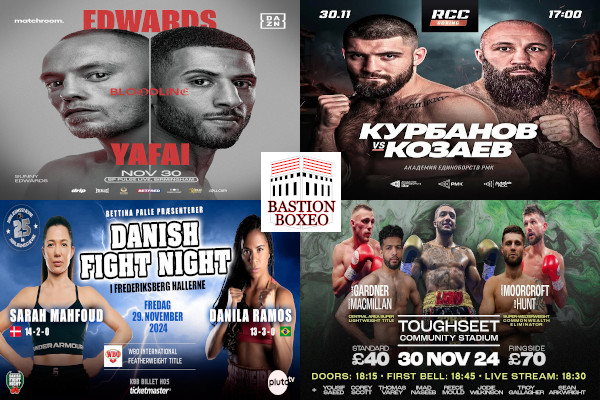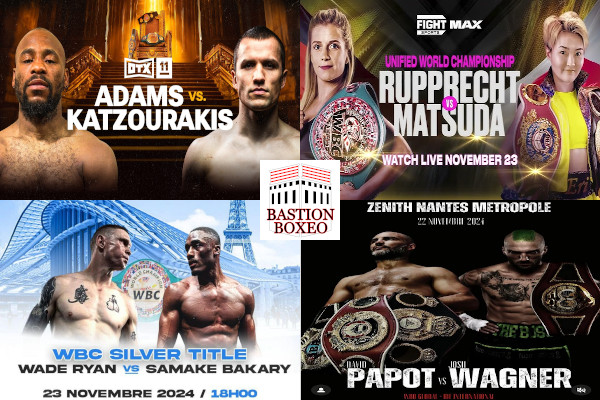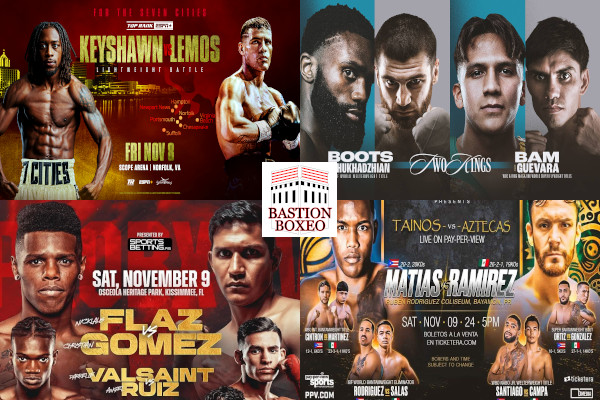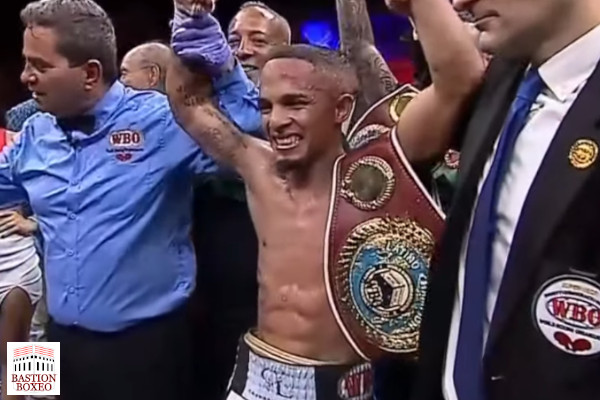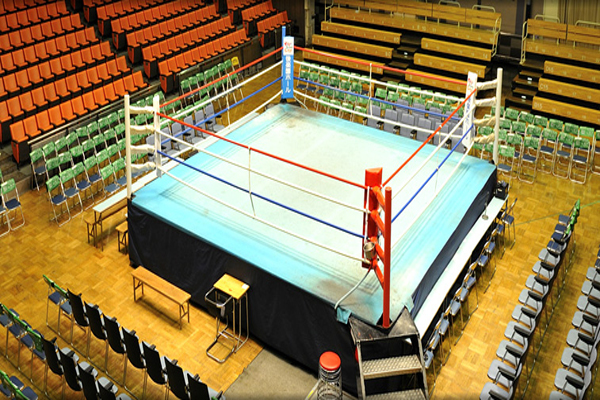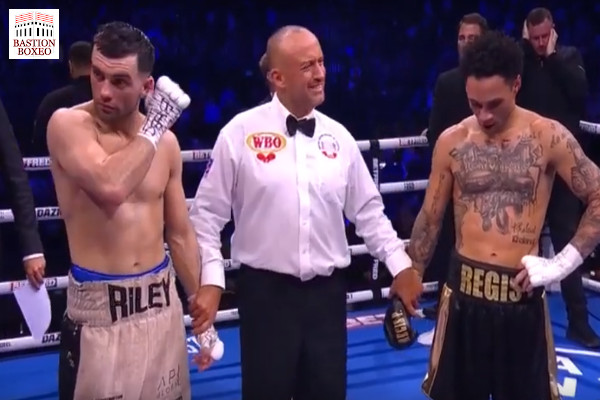Las gigantescas ventas del PPV Gervonta Davis vs. Ryan García sólo son una buena noticia para la industria, no para los fans
Daniel Pi
@BastionBoxeo
Las cifras de ventas de PPV filtradas deben ser siempre vistas con mucha cautela, especialmente si el periodista que las filtra trabaja para una empresa que tiene conexión directa con la promotora organizadora del evento. En otras palabras, es de sobra sabido que hay promotoras que para potenciar a algunos de sus boxeadores, y darles más poder en la mesa de negociaciones, usan a periodistas títeres afines para que publiquen datos falsos que luego nunca se llegan a cuestionar, ya que nadie tiene acceso directo y total a las cuentas oficiales y extraoficiales de las compañías.
En cualquier caso, incluso si damos por hecho que la cantidad de PPV vendidos para el Gervonta Davis vs. Ryan García es completamente cierta, lo que parece claro es que el extraordinario éxito promocional que este evento supuso para los organizadores no tendrá consecuencias tan positivas como se señala para el boxeo y para los aficionados. Más bien todo lo contrario.
Antes de nada, hay que recordar que el Davis-García generó más de 1.200.000 ventas de PPV en Estados Unidos, cada uno a un precio de 85 dólares, lo que da unos ingresos mínimos de 102.000.000 de dólares. A estos hay que sumar 22.800.000 dólares más por la venta de entradas en el recinto, más ingresos por sponsors, venta de derechos audiovisuales en ciertos países, etc.
Estos números absolutamente excepcionales han sido utilizados por los propagandistas para afirmar que esto tendrá consecuencias enteramente positivas, puesto que según ellos facilitará más grandes combates entre los mejores boxeadores de cada división. Con todo, lo que realmente prueban las cifras arriba mencionadas es que a la élite de la industria no le hace falta en la era de las redes sociales enfrentar a los dos mejores boxeadores de una división para lograr números increíbles, sino que le basta con inflar a un influencer para obtener más ingresos que en un choque entre púgiles de élite.
Veamos el caso de manera práctica y no teórica. Ryan García tiene una descomunal cantidad de seguidores en sus redes sociales y se dice incluso que gana más dinero con sus ingresos fuera del ring que con los que obtiene dentro de él. Dejando de lado su faceta de influencer, como se explicó en la previa de la pelea, García no había mostrado en su carrera boxística en ningún momento que fuese un púgil de élite, dado que antes de pelear contra Gervonta Davis no se había medido ni a un solo boxeador de nivel alto en plenitud, siendo la mayoría de los rivales en su récord púgiles a medida para que luciese ante ellos. Además, había dado constantes muestras de debilidad mental.
Sin embargo, con la ayuda de los grandes medios boxísticos, entre ellos The Ring, que es propiedad de Óscar de la Hoya, precisamente el promotor de Ryan García, se le sobrevaloró hasta un punto ridículo. De hecho se debe recordar que no hace tanto algunos desvergonzados propagandistas dijeron que Ryan García era uno de los “cuatro nuevos reyes”, junto a Teófimo López, Devin Haney y Gervonta Davis, con lo que querían comparar a estos púgiles con boxeadores como Durán, Leonard, Hagler y Hearns. Si eso no es inflar a un púgil de forma increíblemente desproporcionada, es difícil decir que alguien está inflado…
Para todos los que conocen el boxeo con cierta profundidad era evidente que Davis era un boxeador superior a García, que «Tank» era el claro favorito y que, más allá de poder pagar el precio de errores puntuales o sobreconfianza (como le puede pasar a cualquier púgil ante un rival inferior), tenía las armas necesarias para ganar. Con todo, la insistencia de los grandes medios propagandísticos fue tal en su trabajo de sobrevaloración, que se logró confundir a muchísimos analistas y buenos aficionados hasta hacerles creer que era un combate 50-50 o que incluso García podía ser visto como el favorito.
Más allá de lo que pudiesen pensar los aficionados que cada semana siguen el boxeo, lo cierto es que en los grandes eventos el grueso de compras de PPV no lo hacen ellos, sino los aficionados casuales, que prácticamente no ven otros combates que no sean los de los cuatro boxeadores más famosos del momento. Esto les hace víctimas perfectas para el engaño en este esquema, en el que simplemente una mentira repetida las suficientes veces se convierte en realidad.
El resultado de todo esto es que un influencer con millones de seguidores, que tenía todo por demostrar en el ring y que había abandonado a medio varios entrenamientos llorando (literalmente), fue comparado con cuatro de los mejores boxeadores de la historia en los últimos sesenta años, se subió al ring ante su primer rival de nivel alto y fue neutralizado y amedrentado antes de decidir esperar al diez para levantarse en una cuenta por golpe al torso. Sin embargo, esto generó 102.000.000 millones de dólares en ingresos sólo por PPV en Estados Unidos.
Por otro lado, no hay que perder de vista que toda la promoción de este enfrentamiento ha tenido como tema central una patraña: se dijo que en el choque Gervonta Davis vs. Ryan García se enfrentaban los mejores contra los mejores. Pero realmente un choque entre los mejores habría sido Davis vs. Shakur Stevenson, Davis vs. Haney, Davis vs. Lomachenko o cualquier otra combinación entre estos. Sin embargo, los grandes medios no están esforzándose ni un ápice de lo que se esforzaron por el Davis-García pidiendo, por ejemplo, un Davis-Stevenson, porque saben que la mayoría de aficionados casuales no sabe quién es Stevenson (pese a ser mil veces mejor que “King Ry”) y que no generaría tantos ingresos en PPV, por lo menos por ahora.
Aunque Ryan García es el ejemplo más impactante de la problemática tratada en este artículo, el hecho es que este sólo es un caso más en una era en la que se premia mucho más la fanfarronería, la inmadurez y tener seguidores en YouTube, Twitter, Instagram, TikTok, Twitch, Facebook, etc. que ser un buen boxeador dedicado, serio y profesional.
Y quien considere que lo mencionado arriba es falso, sólo tiene que mirar otros incontables ejemplos, como el de Edgar Berlanga, que está mostrando un nivel por debajo del top 15 (y que incluso mordió a su último rival por su frustración) pero por el que las promotoras se pelearon cuando cortó lazos con Top Rank; el de Rolando Romero, que va a acceder a un mundial WBA superligero pese a que su única “virtud” es tener una boca que es una ametralladora para insultar, faltar al respeto y autoalabarse; el de Chris Eubank Jr., que ha sido tratado con veneración por muchos durante una carrera que ha sido en general un fracaso, etc. Eso por no hablar de que grupos como DAZN están dedicado enormes porcentajes de su inversión en eventos de youtubers.
Por otro lado, lejos de poder ser optimista respecto a ver grandes duelos en el boxeo, es lógico poder ser pesimista. No se ha pactado todavía el Crawford-Spence (The Ring dijo que la pelea se anunciaría oficialmente durante el Davis-García), las negociaciones para el Fury-Usyk acabaron tras un circo, Bivol y Beterbiev confirmaron que no va a haber acuerdo entre ellos, Canelo sigue manteniendo el peso supermedio estancado, etc. Quizás en un afortunado cambio, todo esto se solucione en los próximos doce meses y veamos extraordinarios combates protagonizados por los nombres mencionados, pero por ahora sólo tenemos lo de siempre: rumores sobre un futuro mejor que nunca parece llegar.
En resumen, como evidenció la pelea Mayweather-McGregor, que es la ranqueada como número 2 en la historia de generar ingresos en venta de entradas en Las Vegas y que dio pistoletazo de salida a la era de los “combates circo”, lo que más interesa a la élite de la industria es enfrentar a nombres conocidos y hacer creer a los aficionados casuales que se pactan combates “entre los mejores”. No obstante, a la vez que Ryan García alcanza una pugna descomunal, pesos superligeros infinitamente mejores que él como Regis Prograis (éste encima es campeón mundial WBC) son mantenidos en un segundo plano e ignorados por la mayoría de aficionados.
Dado que las coronas del peso ligero están unificadas, quizás el ganador del Haney-Loma pueda disputar un choque ante Shakur Stevenson, ya que este último es compañero de escuadra de ambos (Haney podría dejar de serlo en breve), es aspirante obligatorio WBC y para él no hay otra vía para alcanzar un título mundial en la división. Pero si se pacta este choque u otro en circunstancias similares, no será debido a que Gervonta Davis y Ryan García les han abierto la puerta con su venta de PPV. Además, por cada gran duelo que se acuerde, se pactarán decenas de pugnas con boxeadores inflados, ya que el caso de García le ha dejado claro a la industria por enésima vez que actualmente es mucho más fácil y rentable usar su propaganda para crear ídolos con pies de barro apoyados por incontables fans acríticos, que hacer que un gran boxeador, pero con poca fama o carisma, luche en cada escalón hasta llegar a lo más alto.
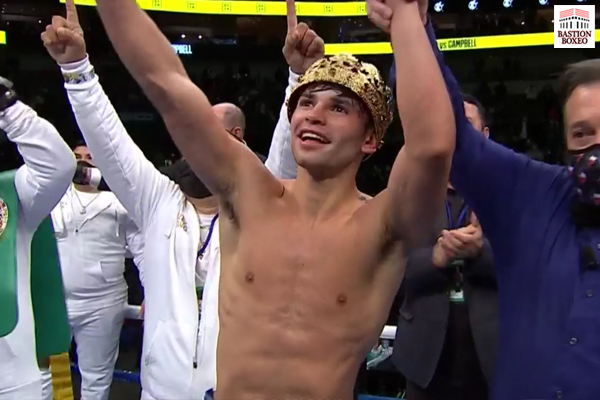
The huge sales of the Gervonta Davis vs. Ryan Garcia PPV is only good news for the industry, not for the fans
Daniel Pi
@BastionBoxing
Leaked PPV sales should always be taken with a pinch of salt, especially if the journalist who leaks them works for a company that has a direct connection to the promoter organizing the event. In other words, it is well known that there are promoters who, in order to give more power to some of their boxers at the negotiating table, use puppet journalists to publish false information that is never questioned, since no one has direct and full access to the official and unofficial company accounts.
In any case, even if we assume that the number of PPV sold for the Gervonta Davis vs. Ryan García fight is completely true, what is clear is that the extraordinary promotional success that this event brought to the organizers will not have as positive consequences as stated for boxing and for the fans. Rather the complete opposite.
First of all, it must be remembered that Davis-García bout generated over 1,200,000 PPV sales in the United States, each at a price of $85, which gives a minimum of $102,000,000. To these must be added 22,800,000 dollars from the live gate, plus sponsors, broadcasting rights in certain countries, etc.
These absolutely exceptional numbers have been used by propagandists to affirm that this will have entirely positive consequences, since according to them it will help to reach agreements for more big fights between the best boxers in each division. All in all, what the above numbers really prove is that in the age of social media, the elite of the industry don’t need to pit the top two fighters in a division against each other to achieve incredible figures, but they just need to hype an influencer to obtain more income than in a clash between elite fighters.
Let’s see the case in a practical and not theoretical way. Ryan García has a huge number of followers on his social networks and it is even said that he earns more money with his income outside the ring than inside it. Leaving aside his “job” as an influencer, as explained in the preview of the fight, García had not shown at any time in his boxing career that he was an elite fighter, since before fighting Gervonta Davis he had not even faced a single high-level boxer in his prime, and most of the opponents on his record were tailor-made for him. In addition, he had shown constant signs of mental weakness.
However, with the help of the big boxing media, including The Ring, which is owned by Óscar de la Hoya, precisely Ryan García’s promoter, he was ridiculously overrated. In fact, it should be remembered that not so long ago some shameless propagandists said that Ryan García was one of the «New Four Kings», along with Teófimo López, Devin Haney and Gervonta Davis, label which they wanted to compare these fighters with boxers like Durán, Leonard, Hagler, and Hearns. If that’s not hyping a fighter out of all proportion, it’s hard to say that someone is hyped…
For all those who know boxing a little, it was evident that Davis was a superior boxer to García, that “Tank” was the clear favorite and that, beyond the possibility of paying the price for an occasional mistake or due to overconfidence (as can happen to any fighter against an inferior opponent), he had the necessary weapons to win. However, the insistence of the big propaganda media overrating him was such that many analysts and knowledgeable fans were led to believe that it was a 50-50 fight or that even García could be seen as the favorite.
Beyond what the fans who follow boxing every week thought, the truth is that in the big events the major part of PPV purchases are not made by them, but by casual fans, who only watch fights of the most famous boxers of the moment. This makes them perfect victims for deception in this scheme, in which simply a lie repeated enough times becomes reality.
The result of all this is that an influencer with millions of followers, who had everything to prove in the ring and who had left several training sessions in tears (literally), was compared to four of the best boxers in history in the last sixty years, got into the ring against his first high-level opponent and was outboxed and intimidated before deciding to wait for ten to get up in a count by a body shot. However, this generated $102 million in the US through pay-per-view alone.
On the other hand, we must not lose sight of the fact that all the promotion of this fight has had a fraud as its central theme: it was said the Gervonta Davis vs. Ryan Garcia bout pitted the best against the best. But really a clash between the best would have been Davis vs. Shakur Stevenson, Davis v. Haney, Davis v. Lomachenko or any other combination between them. However, the mainstream media are not asking with the same intensity, for example, a fight between Davis and Stevenson, because they know that the majority of casual fans don’t know who Stevenson is (despite being a thousand times better than «King Ry») and that it would not generate as much income on PPV, at least for now.
Although Ryan García is the most shocking example of the issue addressed in this article, the fact is that this is just one more case in an era in which cockiness, immaturity and having followers on YouTube, Twitter, Instagram, TikTok, Twitch, Facebook, etc. are more profitable than to be a good, disciplined and dedicated boxer.
And whoever considers that the above mentioned is false, just have to look at countless other examples, such as Edgar Berlanga, who is showing a level below the top 15 (and who even bit his last opponent out of frustration) but many promoters tried to hire him when he cut ties with Top Rank; as Rolando Romero, who is going to access a WBA super lightweight championship despite the fact that his only «virtue» is to have as a mouth a machine gun for insulting, disrespecting and praising himself; as Chris Eubank Jr., who has been treated with reverence by many during a career that has generally been a failure, etc. That’s not to mention that groups like DAZN spend huge percentages of their investment on youtuber events.
On the other hand, far from being optimistic about seeing great duels in boxing, it is logical to be pessimistic. The Crawford-Spence fight has not yet been agreed (The Ring said that the fight would be officially announced during the Davis-García card), the negotiations for the Fury-Usyk ended after a circus, Bivol and Beterbiev confirmed that there will be no agreement between them, Canelo continues to stall the super middleweight division, etc. Perhaps in a lucky turnaround, this will all change in the next twelve months and we’ll see some amazing matches featuring the names mentioned. But for now we’ve just got the usual stuff: rumors of a better future that never seems to come.
In short, as evidenced by the Mayweather-McGregor fight, which is ranked number 2 in the history of live gate in Las Vegas and which kicked off the era of “circus fights”, what most interests the elite of the industry is to match known names and to make casual fans believe that is a clash «between the best». However, while Ryan Garcia takes part in a huge fight, super lightweights infinitely better than him like Regis Prograis (he is also a WBC world champion) are ignored by most fans.
Given that the lightweight crowns are fully unified, perhaps the winner of Haney-Loma could battle Shakur Stevenson, since the latter is a teammate of both (Haney could soon be out of Top Rank), is the WBC mandatory challenger and for him there is no other way to reach a world title in the division. But if this clash or another in similar circumstances takes place, it will not be because Gervonta Davis and Ryan García have opened the door with their sale of PPV. In addition, for every great duel that happens, dozens of fights will be agreed featuring hyped boxers, since the case of García has made it clear to the industry for the umpteenth time that it is currently much easier and more profitable to use their propaganda to create idols with feet of clay supported by countless uncritical fans, than to make a great boxer, but with little fame or charisma, fight at every step of the stair until he reaches the top.

